使用父项目能控制所有子项目依赖的全局版本,能有效的去除子项目里面重复的依赖,减少出错的几率。在此,我们将创建一个父 pom,让所有的子模块都继承该父 pom。
1.spring-cloud-alibaba-examples 项目的创建
- spring-cloud-alibaba-examples 将作为我们子项目的最大父 pom 项目
- 注意:在使用 IDEA 之前我们假设您已经设置了相应的 JDK 配置和 Maven 配置
1.1 使用 IDEA 创建一个 Maven 项目
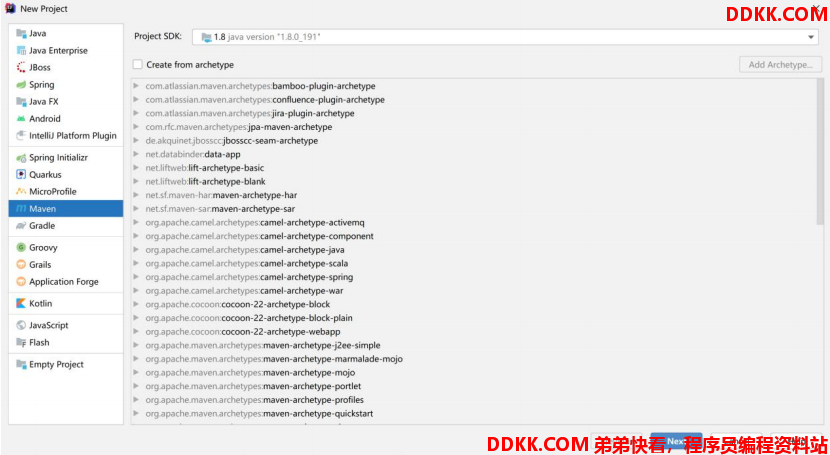
选择 Next:
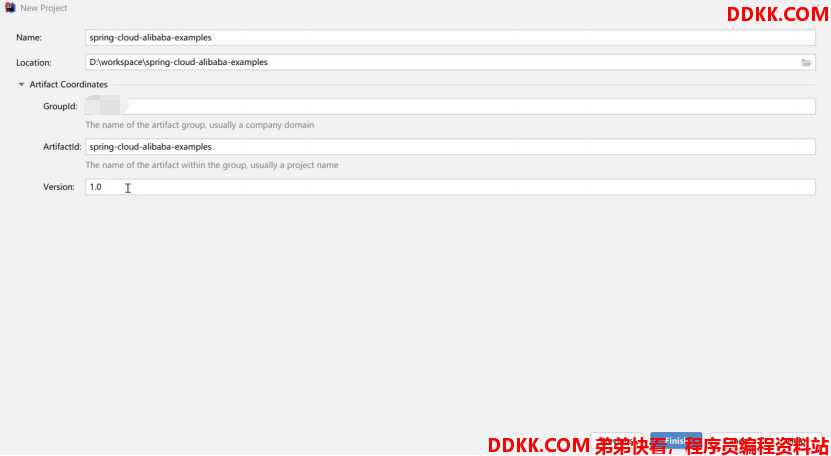
填写下面的相关信息:
- Name:spring-cloud-alibaba-examples
- Location:D:\workspace\spring-cloud-alibaba-examples(不要随便放)
- GroupId:com.dqcgm(每个人不一样,自己定)
- Version:1.0
- 最后,点击 finish 完成创建的过程
1.2 Spring Boot 版本的控制
- 我们采用
< parent>的方式来导入 Spriing Boot 的版本号。 - 打开项目的 pom.xml 文件,添加依赖内容:
<parent>
<groupId>org.springframework.boot</groupId>
<artifactId>spring-boot-starter-parent</artifactId>
<version>2.2.3.RELEASE</version>
<relativePath/> <!-- lookup parent from repository -->
</parent>
这样,我们的项目就已经规定了 Spring Boot 的版本为 2.2.3.RELEASE 了。
1.3 Spring Cloud 版本的控制
我们使用依赖管理的方式来添加 Spring Cloud 的版本信息,在< properties> 里面定义版本信息,这里面我们选择 Hoxton.SR3 这个版本!
<properties>
<spring-cloud.version>Hoxton.SR3</spring-cloud.version>
</properties>
之后在 < dependencyManagement> 里面添加 spring-cloud 的 bom 信息,这将允许您省略任何 Maven 依赖项的版本,而是将版本控制委派给 BOM。
<dependencyManagement>
<dependencies>
<dependency>
<groupId>org.springframework.cloud</groupId>
<artifactId>spring-cloud-dependencies</artifactId>
<version>${
spring-cloud.version}</version>
<type>pom</type>
<scope>import</scope>
</dependency>
</dependencies>
</dependencyManagement>
1.4 SpringCloud Alibaba 版本的控制
同样,我们使用依赖管理的方式来添加 SpringCloud Alibaba 的版本信息。在< properties> 里面定义版本信息,这里面我们选择 2.2.0.RELEASE 这个版本!
<properties>
...
<com-alibaba-cloud.version>2.2.0.RELEASE</com-alibaba-cloud.version>
...
</properties>
之后在 < dependencyManagement> 里面添加 spring-cloud 的 bom 信息,这将允许您省略任何 Maven 依赖项的版本,而是将版本控制委派给 BOM。
<dependencyManagement>
<dependencies>
...
<dependency>
<groupId>com.alibaba.cloud</groupId>
<artifactId>spring-cloud-alibaba-dependencies</artifactId>
<version>${
com-alibaba-cloud.version}</version>
<type>pom</type>
<scope>import</scope>
</dependency>
....
</dependencies>
</dependencyManagement>
1.5 设置为 pom 的版本方式
添加项目的打包方式:
<packaging>pom</packaging>
这将保证我们的项目是以 pom 打包的
1.6 完整的 pom.xml
<?xml version="1.0" encoding="UTF-8"?>
<project xmlns="http://maven.apache.org/POM/4.0.0"
xmlns:xsi="http://www.w3.org/2001/XMLSchema-instance"
xsi:schemaLocation="http://maven.apache.org/POM/4.0.0
http://maven.apache.org/xsd/maven-4.0.0.xsd">
<modelVersion>4.0.0</modelVersion>
<parent>
<groupId>org.springframework.boot</groupId>
<artifactId>spring-boot-starter-parent</artifactId>
<version>2.2.3.RELEASE</version>
<relativePath/> <!-- lookup parent from repository -->
</parent>
<groupId>com.dqcgm</groupId>
<artifactId>spring-cloud-alibaba-examples</artifactId>
<version>1.0</version>
<properties>
<spring-cloud.version>Hoxton.SR3</spring-cloud.version>
<com-alibaba-cloud.version>2.2.0.RELEASE</com-alibaba-cloud.version>
</properties>
<dependencyManagement>
<dependencies>
<dependency>
<groupId>org.springframework.cloud</groupId>
<artifactId>spring-cloud-dependencies</artifactId>
<version>${
spring-cloud.version}</version>
<type>pom</type>
<scope>import</scope>
</dependency>
<dependency>
<groupId>com.alibaba.cloud</groupId>
<artifactId>spring-cloud-alibaba-dependencies</artifactId>
<version>${
com-alibaba-cloud.version}</version>
<type>pom</type>
<scope>import</scope>
</dependency>
</dependencies>
</dependencyManagement>
</project>
2.项目的打包
2.1 删除项目里面多余的文件夹
我们的项目仅仅是一个父 pom 文件,因此,项目只需要保留 pom.xml 即可,我们在此可以删除 src 目录
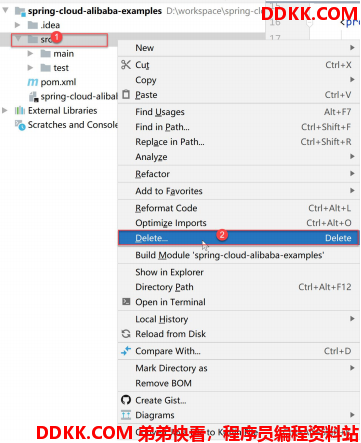
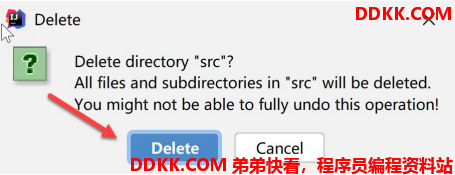
点击 Delete 即可删除
2.2 执行打包
使用 Maven 打包我们的项目
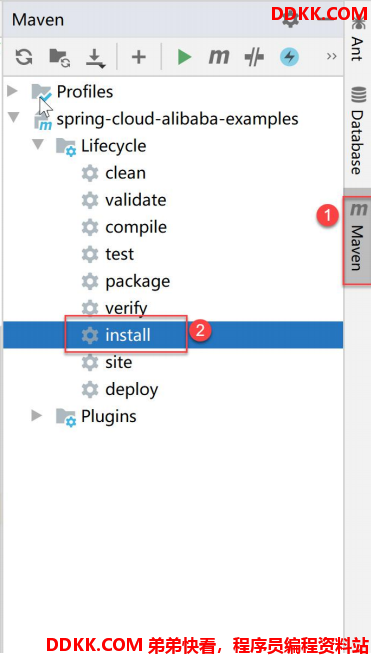
最后在控制台出现:
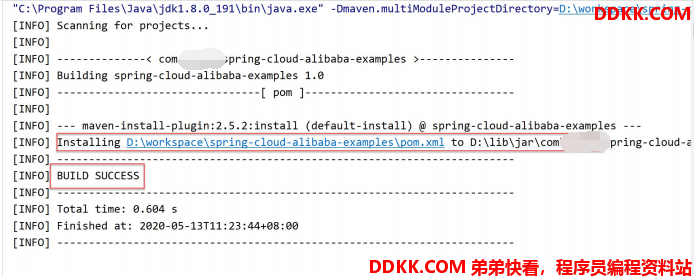
代表项目打包成功!
2.3 观察打包后的效果
我们打开我们 Maven 设置的本地仓库地址,如图所示:
打开 Maven 里面的 settings.xml 文件,找到该标签

发现我们本地仓库的地址位于 D 盘的 lib\jar 文件夹里面:
打开该文件夹:
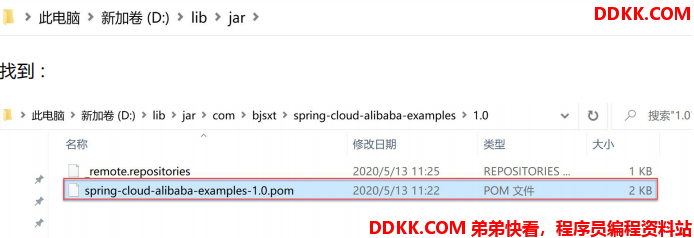
发现该文件已经存在,证明我们的打包成功了